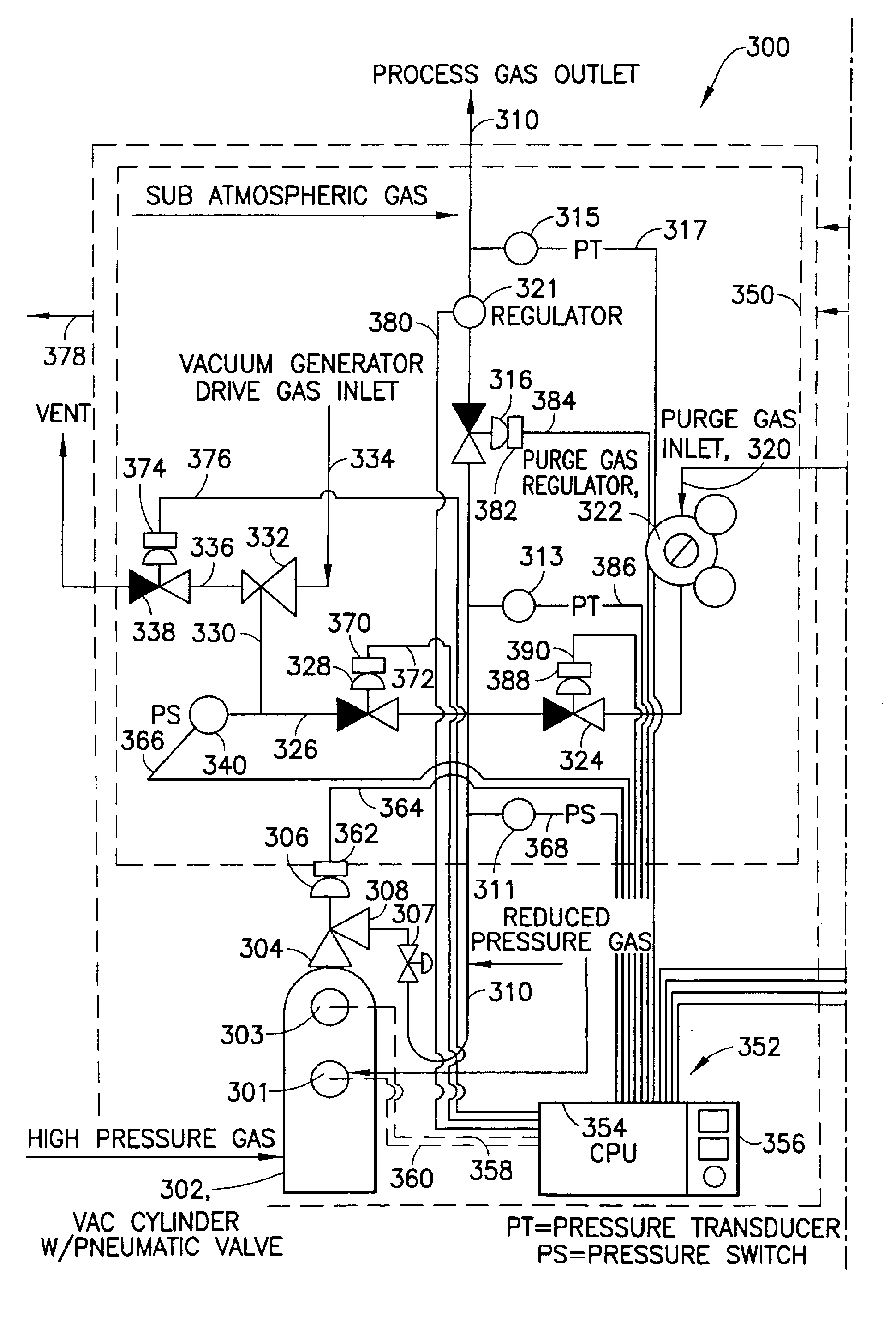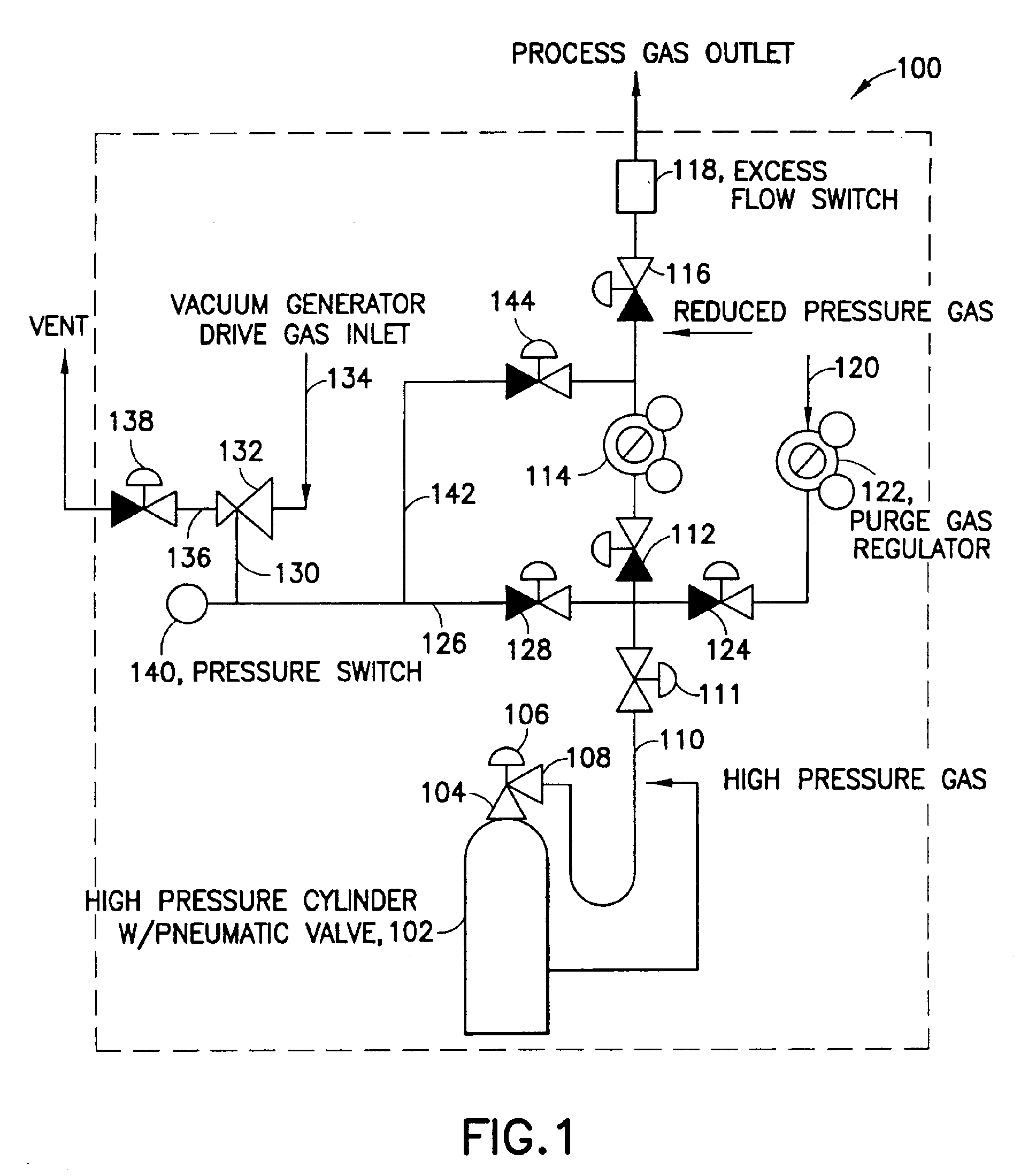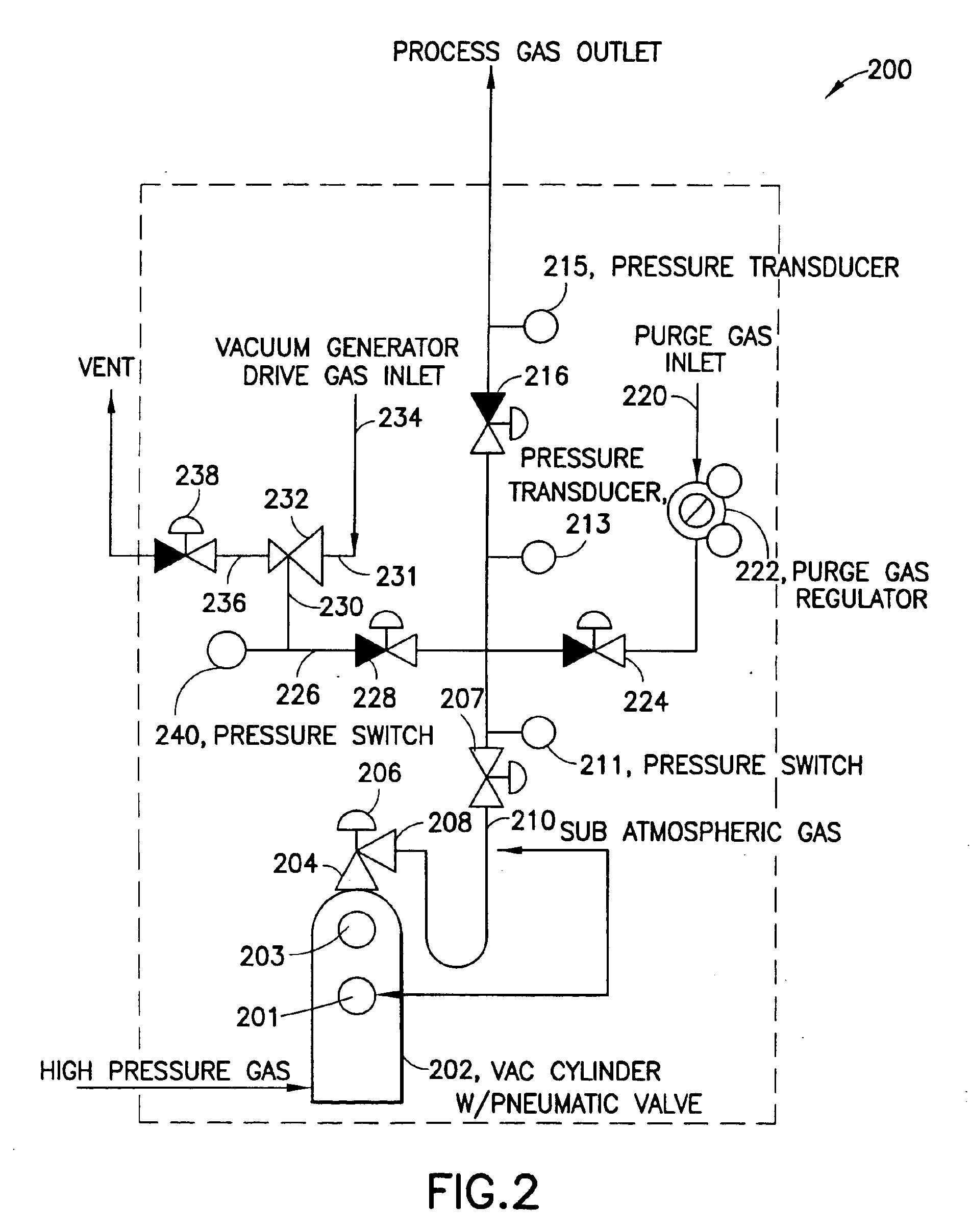Pressure-based gas delivery system and method for reducing risks associated with storage and delivery of high pressure gases
a gas delivery system and gas delivery technology, applied in the direction of fluid pressure measurement by mechanical elements, container discharging from pressure vessels, multi-way valves, etc., can solve the problems of cylinder limits the magnitude of an incident and the magnitude of a release, and the incidence of catastrophic failure of such dot-approved gas cylinders is very low, so as to achieve the effect of increasing the service li
- Summary
- Abstract
- Description
- Claims
- Application Information
AI Technical Summary
Benefits of technology
Problems solved by technology
Method used
Image
Examples
example 1
Using Fault Tree methodology, “pre-regulated” VAC® cylinders (ATMI, Inc., Danbury, Conn.) having interiorly disposed regulators were compared with standard high pressure cylinders in silane service. Gas cabinet installations were identical and corresponding fault trees were constructed and risk analysis completed. The potential release scenarios [Si] numbered over 20 for each comparison and many involved multiple failures for a release to occur. In this manner an overall frequency of occurrence was determined, risks calculated ant the delivery methods compared on a relative basis.
The likelihood of incidents is affected by cylinder replacement frequency and delivery pressure. The consequence of operational incidents or worst case release rate [WCR]—is shown in Table 1 and ranges from 30.5 to 70.8 standard liters per minute (slpm) (NFPA 318 Standard for the Protection of Cleanrooms, 2000 Edition). The WCR for the pre-regulated cylinder was capped at 8.2 slpm and for all fill pressures...
example 2
Silane Delivery—Comparative Example
Pre-regulating pressure was set to fix a constant delivery pressure for the pre-regulated gas source vessel, which was independent of fill pressure. Silane fill densities are a function of risk tolerance; about half of the fills in this test were 5 kg fills, with the remainder of the fills spread between 10 kg, 12 kg and 15 kg charges of fluid to the vessel. Table 2 below sets out the silane worst case release rates at 800 psig and 100 psig, wherein VAC refers to a pre-regulated gas storage and dispensing vessel commercially available from ATMI, Inc. (Danbury, Conn.).
TABLE 2Silane Worst Case Release Rates at 800 psig and 100 psigCylinderPressureCapacityRFORelease RateStandard800 psig 5 kg0.010″30.5 slpmVAC100 psig15 kg0.010″ 3.5 slpm[1600 psig]100 psig15 kg0.014″ 6.9 slpm
Table 3 below sets out the results of relative risk analysis for silane delivery options.
TABLE 3Gas Delivery SystemFrequencyConsequenceRiskRisk Ratio15 kg, VAC (100 psig)4.44E−38.2...
PUM
 Login to View More
Login to View More Abstract
Description
Claims
Application Information
 Login to View More
Login to View More - R&D
- Intellectual Property
- Life Sciences
- Materials
- Tech Scout
- Unparalleled Data Quality
- Higher Quality Content
- 60% Fewer Hallucinations
Browse by: Latest US Patents, China's latest patents, Technical Efficacy Thesaurus, Application Domain, Technology Topic, Popular Technical Reports.
© 2025 PatSnap. All rights reserved.Legal|Privacy policy|Modern Slavery Act Transparency Statement|Sitemap|About US| Contact US: help@patsnap.com



